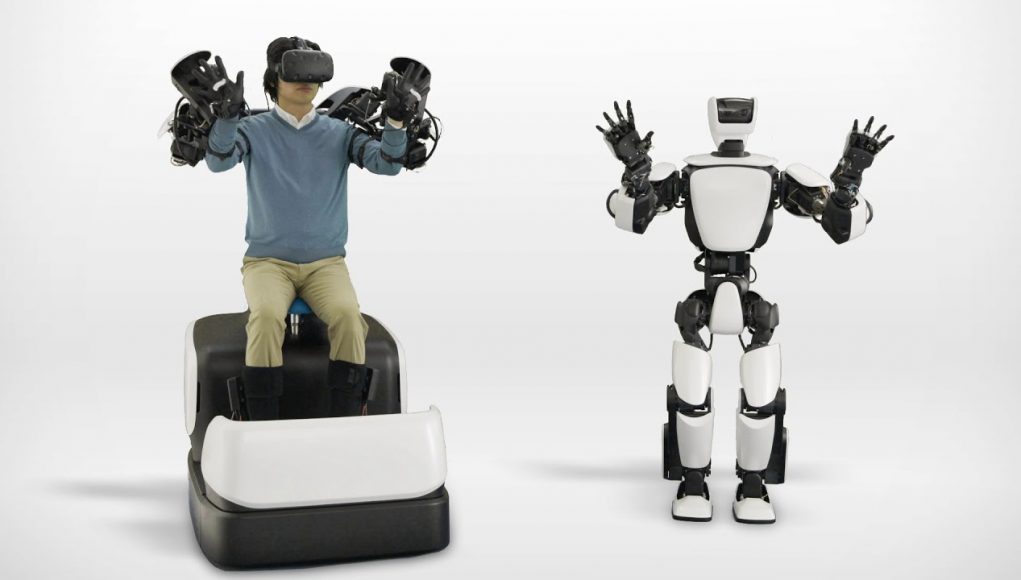Toyota recently revealed T-HR3, the company’s third-generation humanoid robot. Designed primarily as an experiment to explore new technologies to make robots more physically capable, T-HR3 demonstrates a new “remote maneuvering system” that not only mirrors a user’s movements to the robot, but lets them see and interact with the world through the ‘eyes’ and arms of the robot using a robotic exoskeleton, an HTC Vive headset, and a pair of Vive Trackers.
Controlled via what Toyota calls a “Master Maneuvering System,” T-HR3 allows the entire body of the robot to be operated by a person thanks to wearable controls that the company says mirrors the user’s head, hand, arm and foot movements.
Both the robot itself and the Master Maneuvering System contain a series of motors, reduction gears and torque sensors connected to each joint. A total of 16 controls command 29 individual robot body parts, making for what the company calls “a smooth, synchronized user experience.”
Toyota is positioning the robot as the next logical step in the ultimate goal of creating a friendly assistant capable of helping people in a variety of settings, including the home and medical facilities, and more dangerous places like construction sites, disaster-stricken areas and outer space. As investment in telepresence-controlled humanoid robot grows though, there’s bound to be a number of happy side effects for VR users like better force-feedback haptics and full immersion rigs that could equally be used to control VR avatars. Because projects like these are still in prototyping, we’ll just have to wait and see what happens during the inevitable rise of our robotic companions. In any case, we’ll be here reporting (until the journo-bots take our jobs, that is).
If you want to see T-HR3 in action, it will be featured at the upcoming International Robot Exhibition 2017 from November 29th through December 2nd at Tokyo Big Sight.







